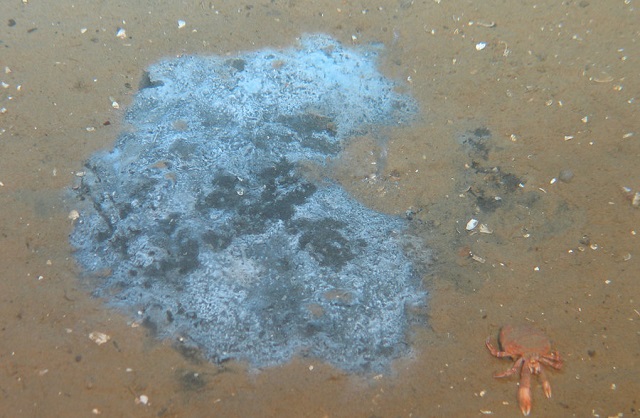Wells Release More Methane Than Previously Thought
Boreholes in the North Sea could constitute a significantly more important source of the greenhouse gase methane than previously thought, according to a new study from the GEOMAR Helmholtz Centre for Ocean Research Kiel in Germany.
In April 2010, huge amounts of methane gas escaped from a well below the Deepwater Horizon platform in the Gulf of Mexico. This blow-out caused an explosion in which 11 people died. For several weeks, oil spilled from the damaged well into the ocean. While such catastrophic blow-outs are rare, continuous discharge of smaller amounts of gas from active or old and abandoned wells occurs more frequently with large amounts of methane are released from the surrounding sediments, probably over long periods of time.
Scientists from GEOMAR Helmholtz Centre for Ocean Research Kiel and the University of Basel published new data indicating that gas migration along the outside of wells could be a much bigger problem than previously assumed. This type of leakage is currently not considered by operators or regulators but could be just as important as fugitive emissions through damaged wells, which are usually recognized and quickly repaired.
"We estimate that gas leakage around boreholes could constitute one of the main sources of methane in the North Sea", says Dr Lisa Vielstädte from GEOMAR, the first author of the study.
During expeditions to oil and gas fields in the central North Sea in 2012 and 2013, the scientists discovered a number of methane seeps around abandoned wells. The gas originates from shallow gas pockets buried less than 1,000 meters below the seabed which are penetrated when drilling into the underlying, economically interesting hydrocarbon reservoirs. These gas pockets usually do not pose a risk to the drilling operation itself, but disturbing the sediment around the well enables the gas to rise to the seafloor.
 Methane gas leakage near a well. Photo: ROV KIEL6000, GEOMAR.
Methane gas leakage near a well. Photo: ROV KIEL6000, GEOMAR.
Seismic data from the subsurface of the North Sea further show that about one third of the boreholes perforated shallow gas pockets and may thus leak methane. Considering the more than 11,000 wells that have been drilled in the North Sea, this results in a large amount of potential methane sources.
According to the team’s calculations shallow gas migration along wells may release around 3,000 to 17,000 tons of methane from the North Sea seafloor per year.
In the ocean, methane is usually degraded by microbes, thereby locally acidifying the seawater. In the North Sea, about half of the wells are located in such shallow water depths that the methane leaking from the seabed can reach the atmosphere, where it is acting as a potent greenhouse gas.
 Bacteria mats degrading methane on the seabed. Photo: ROV KIEL6000, GEOMAR.
Bacteria mats degrading methane on the seabed. Photo: ROV KIEL6000, GEOMAR.

that matters most
Get the latest maritime news delivered to your inbox daily.
Natural gas, methane, is often praised as the fossil fuel that is most suitable for the transition from coal burning towards sustainable energies. However, if drilling for gas leads to such high atmospheric methane emissions, we have to rethink the greenhouse gas budget of natural gas, say the researchers.
In order to better quantify the human impact on the methane budget of the North Sea, Kiel’s research vessel Poseidon will investigate further gas seeps in the vicinity of oil and gas wells in October.
